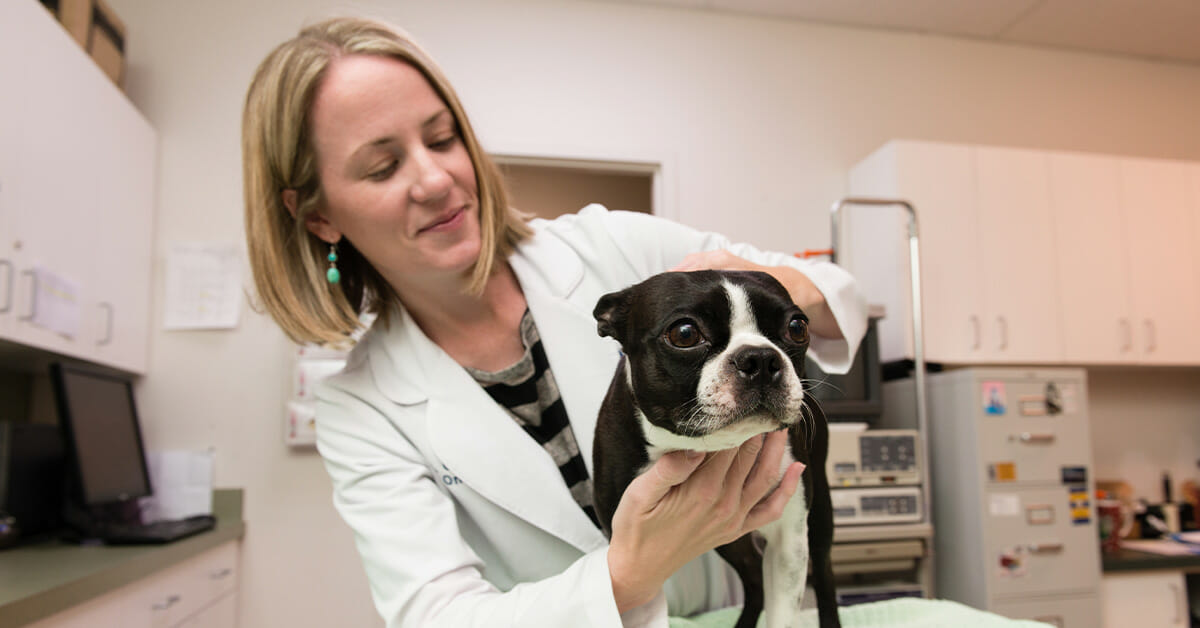Bladder Tumors in Dogs and Cats
Bladder cancer is more common in dogs than cats. Learn the signs, diagnosis, and treatment for bladder cancer in pets.
Bladder tumors invade the bladder wall, creating masses within the bladder, urethra (empties bladder), and ureters (empties kidneys). Bladder tumors have the potential to spread (metastasis) beyond the urinary tract, usually to the local lymph nodes, although metastasis can also occur in other places such as bone and the lungs. Although fewer than 15% of dogs have evidence of spread at the time of diagnosis, >50% of dogs eventually develop metastatic disease. The most common bladder tumors in dogs and cats are transitional cell carcinoma; however, in cats the incidence of this disease is very low.
Diagnosing Bladder Cancer
Bladder cancer is more common in female dogs than male dogs. There is also an increased risk of bladder cancer in certain breeds including Scottish Terriers, West Highland White Terriers, Airedales, Collies, Shelties, and Beagles. In cats, there is not a clear difference between male and female cats. The most common cat breed affected is the Domestic Short Hair.
The most common signs associated with a bladder tumor include blood in the urine, incontinence (inability to control urination), frequent urination, and straining to urinate. Unfortunately, these signs may mimic signs seen with a bladder infection. Many dogs with bladder tumors will improve with antibiotics as if treating a urinary tract infection. This can sometimes lead to a delay in diagnosis. If repeated urinary tract infections are noted, your veterinarian may recommend additional testing.
If a primary bladder tumor is suspected, your veterinarian may recommend an ultrasound of the bladder and the entire belly. This ultrasound will allow for evaluation of the bladder as well as the surrounding structures, including lymph nodes, a common location for metastasis. In addition to an ultrasound, further testing is indicated to confirm the diagnosis. This includes cystoscopy (use of a camera guided biopsy tool) and further diagnostic testing of the urine to look for abnormal cells.
Treating Bladder Cancer
Often, chemotherapy in combination with an NSAID (non-steroidal anti-inflammatory) is the primary treatment recommendation. The option for surgery depends on the location of the mass and the presence of cancer spread. Some types of radiation therapy have also shown benefits, although side effects such as straining to urinate or defecate can occur.
Based on the nature of this disease and the inability for a cure, it is likely that your pet will remain on some sort of therapy for the remainder of their life. Your MedVet oncology team will discuss the treatment options specific to your dog or cat and help guide you to the best option for your pet.
Your Pet’s Prognosis
The prognosis for dogs and cats with bladder cancer depends on the specific tumor type, location of the mass, stage of the cancer, and elected treatment. It is important to note that dogs and cats with bladder cancer often feel well throughout the treatments. If a patient is showing signs of feeling unwell, it is important to ensure they can urinate. If a dog or cat is unable to urinate, this is a medical emergency and the MedVet emergency team (or your nearest emergency care provider) can facilitate care.
If your pet is diagnosed with cancer, it can be scary and overwhelming. But your veterinary oncologist and care team will be with you every step of the way. A specialist can help you understand the treatment options and how they can affect your pet’s longevity and quality of life.
FAQs
Contents



